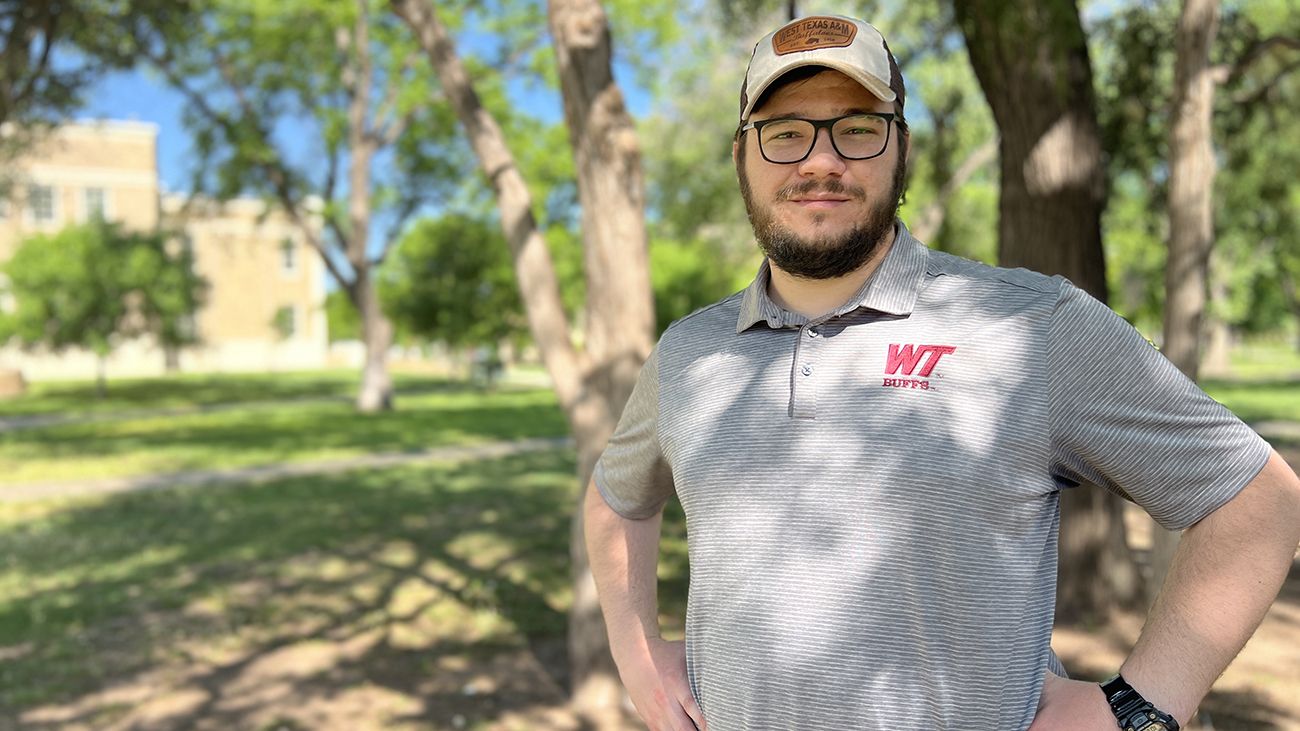- Featured
- Research
- Community
- Science
WT Biology Professor Wins Grant to Study Panhandle’s Pheasant Population
Copy by Chip Chandler, 806-651-2124, cchandler@wtamu.edu
CANYON, Texas — A West Texas A&M University faculty member recently earned an $860,000 grant to study the declining population of an economically important Panhandle bird.
Dr. Joshua Brown, assistant professor of biology in the Department of Life, Earth and Environmental Sciences in WT’s Paul Engler College of Agriculture and Natural Sciences, is actively seeking area landowners to participate in a study of ring-necked pheasants in the High Plains.
The grant comes from Texas Parks and Wildlife Department, which has monitored the birds’ population since 1976 and have noticed a decline for decades. The department will use funds from the Federal Aid in Wildlife Restoration Act, which provides resources for state wildlife conservation agencies.
Brown’s study will examine the birds’ nesting habits, movements and population genetics to see if any new conservation strategies might be devised.
In doing so, he’ll utilize state-of-the-art technology.
“We’ll trap birds, attach a 15-gram GPS tracker with a Teflon harness, take some blood, then let them go,” Brown said. “We’ll see where the birds are going with real-time information that will help us identify their potential nesting sites. It’s a new use of GPS trackers. Traditionally, nest searching has been time intensive, requiring people in the field to manually search through brush for signs of a nest.”
Once nests are located, Brown, two graduate students and his research technicians will do vegetation assessments and a modeling analysis to see what the characteristics of successful and unsuccessful nests are.
“Eventually, we’ll develop information that Texas Parks and Wildlife can disseminate to farmers and private landowners that they can incorporate on their property if they’re interested in conserving pheasants,” Brown said.
Securing the grant is a significant accomplishment for Brown, said Dr. Jason Yarbrough, head of the Department of Life, Earth and Environmental Sciences.
“Dr. Brown has proven to be an exceptional faculty member,” Yarbrough said. “He is a great colleague and a dedicated scientist who is off to a great start. We are proud to have him in the department.”
Brown, who won his College’s Young Faculty Award, said the grant was a perfect fit for him, both because he recently completed his first year as an assistant professor at WT and because the University is perfectly positioned to lead such research.
“Pheasants, which aren’t native to the region, were first brought here because they’re fun to hunt and usually have self-sustaining populations,” Brown said. “In the 1980s and ’90s, agricultural practices changed as far as harvesting and watering, and those changes resulted in habitats that aren’t as conducive to pheasants. The birds can certainly coexist with agriculture, but there are certain conditions for which that is more conducive.”
Brown has already reached out to conservation group Pheasants Forever to help find landowners willing to let the research team do field work on their property. Others interested in taking part may contact Brown at 806-651-5217 or jbrown@wtamu.edu.
Leading such impactful studies as a Regional Research University is in line with the University’s long-range plan, WT 125: From the Panhandle to the World.
That plan is fueled by the historic One West comprehensive fundraising campaign, which reached its initial $125 million goal 18 months after publicly launching in September 2021. The campaign’s new goal is to reach $175 million by 2025; currently, it has raised nearly $160 million.
About West Texas A&M University
WT is located in Canyon, Texas, on a 342-acre residential campus. Established in 1910, the University has been part of The Texas A&M University System since 1990. WT, a Hispanic Serving Institution since 2016, boasts an enrollment of about 10,000 and offers 59 undergraduate degree programs and more than 40 graduate degrees, including two doctoral degrees. The University is also home to the Panhandle-Plains Historical Museum, the largest history museum in the state and the home of one of the Southwest’s finest art collections. The Buffaloes are a member of the NCAA Division II Lone Star Conference and offers 14 men’s and women’s athletics programs.
—WT—

